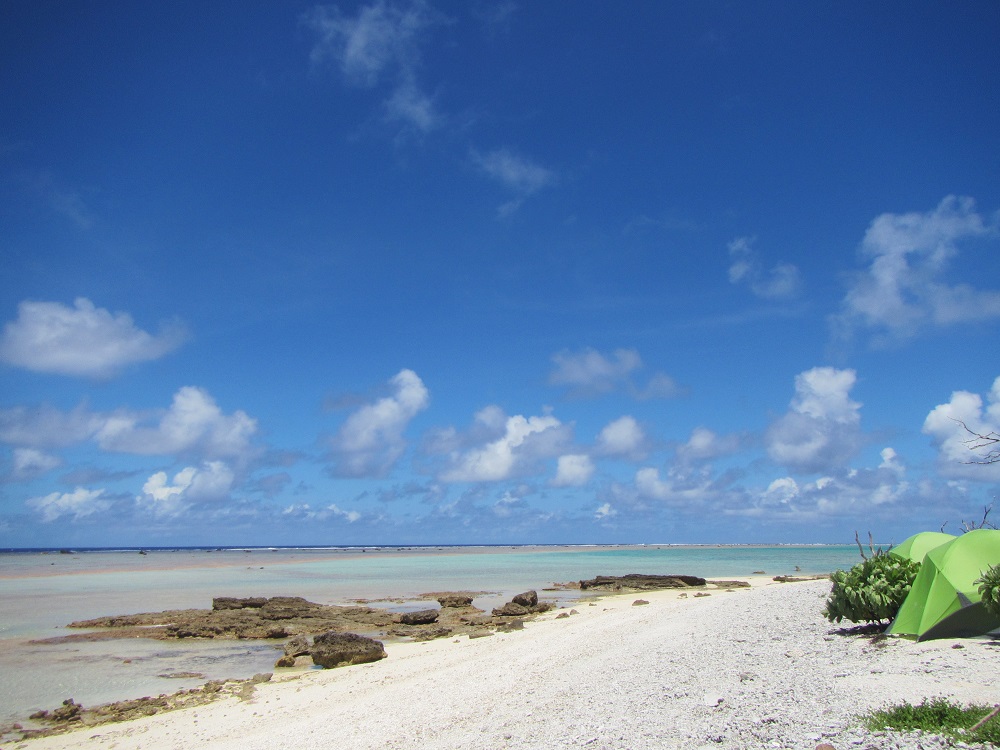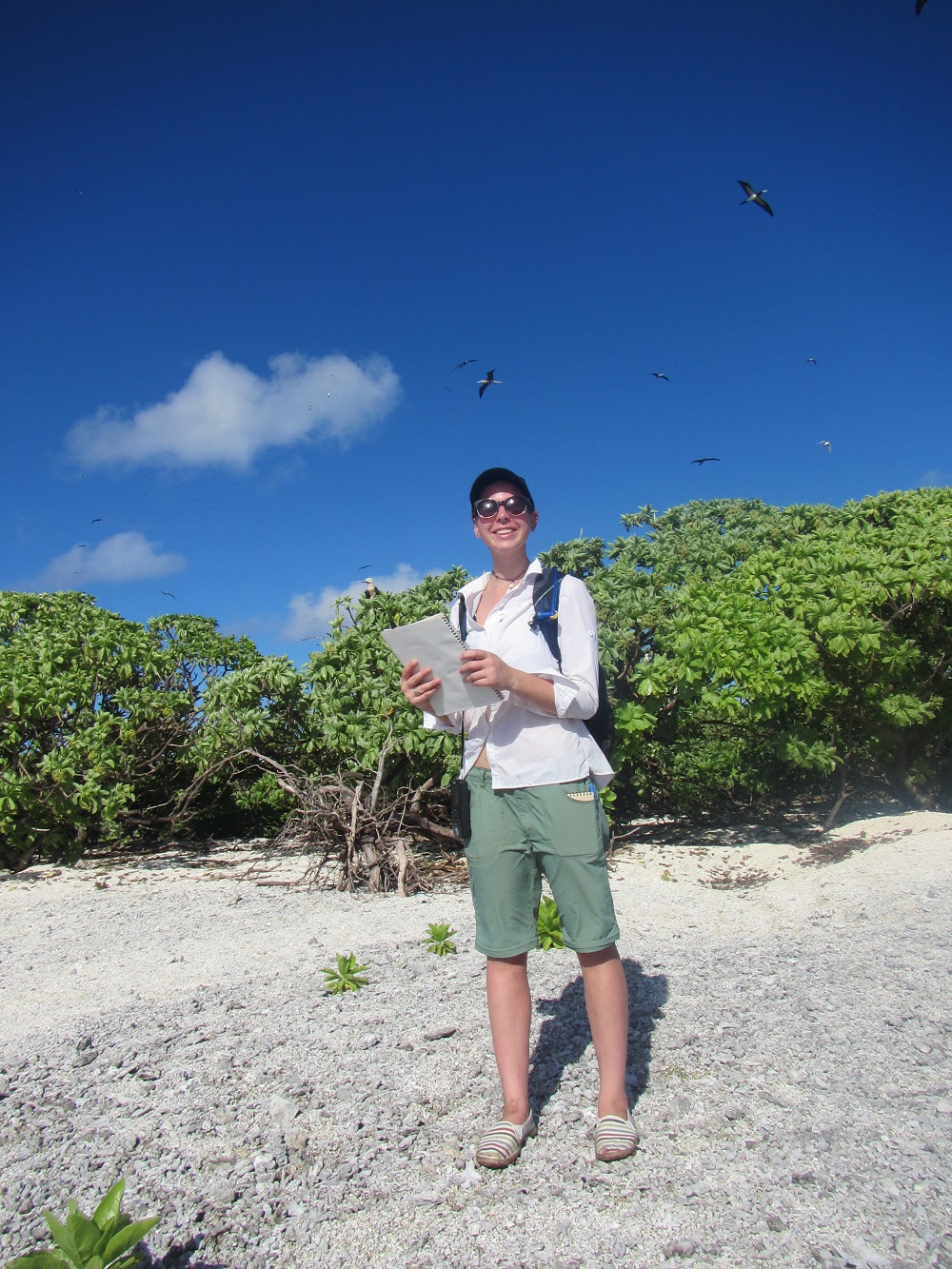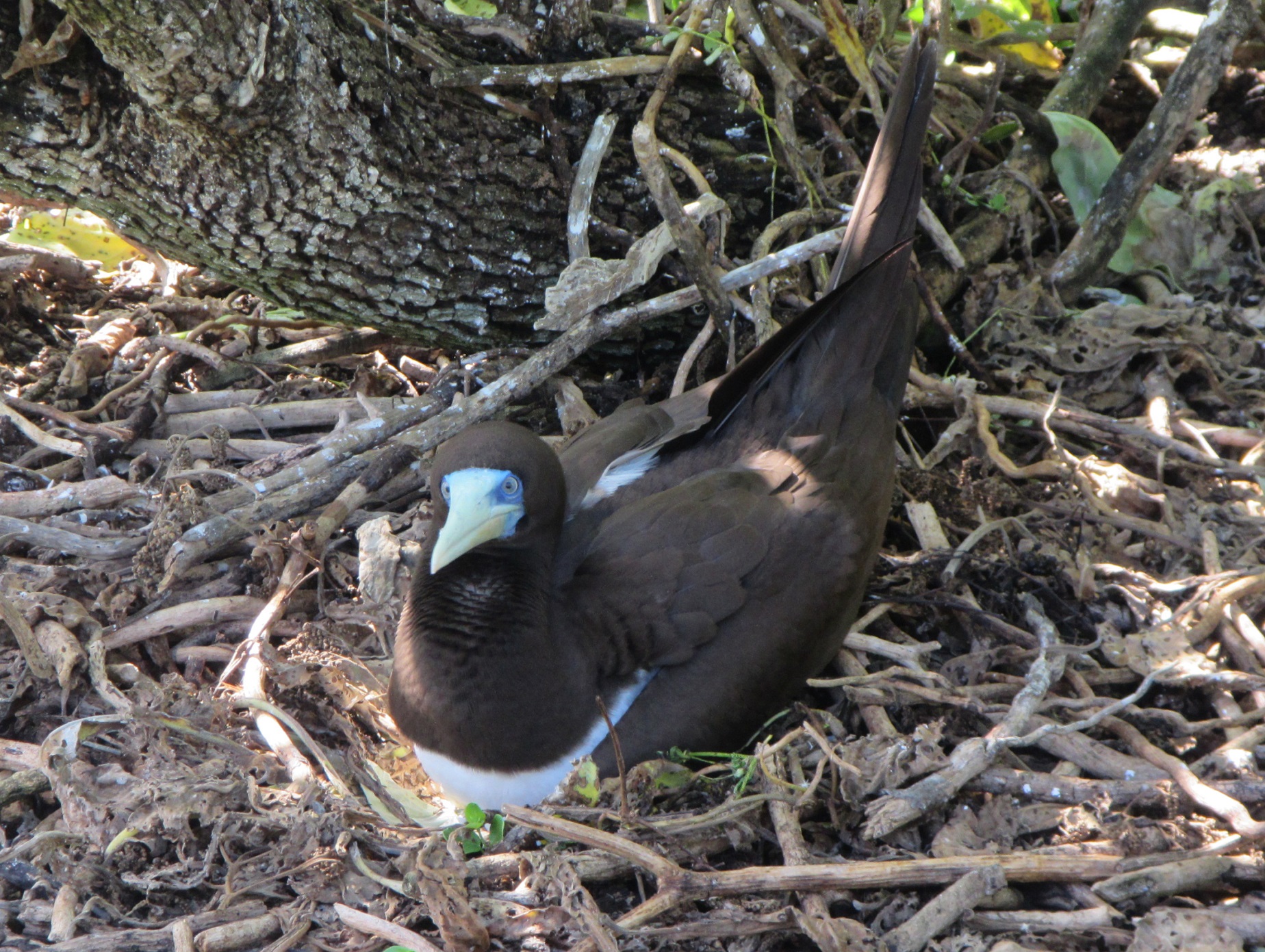
Can seabirds tell us how much rubbish there is in the ocean?
It’s a question that took IMAS Honours student Megan Grant to a remote Rose Atoll in American Samoa.
“Rose Atoll is one of the smallest coral atolls in the world,” she said. “It’s the easternmost island of American Samoa and the southernmost point of the United States.
“It’s a pristine part of the Pacific and closed to the public. I feel incredibly lucky that I was able to go there.”
 Ms Grant (Pictured, left) is researching whether the amount of plastic debris in the nests of Brown Boobies is a reliable indicator of the magnitude of debris in the surrounding ocean.
Ms Grant (Pictured, left) is researching whether the amount of plastic debris in the nests of Brown Boobies is a reliable indicator of the magnitude of debris in the surrounding ocean.
Brown Boobies (Pictured, below right) live in tropical regions across the globe and Ms Grant’s study is the first to compare debris loads in their nests, with data being collected from ten sites worldwide.
“I'm studying their nests and whether they contain plastics and other anthropogenic marine debris items.
“I went to another site in November last year, Bedout Island off Western Australia, and data from the remaining sites have been collected by other researchers in Australia and globally.
“Comparisons within and across sites will be made to assess whether certain populations and locations are at risk from debris.
“Monitoring their nests and finding whether they contain debris has been recommended as an efficient and effective method for quantifying the magnitude of debris in the surrounding marine environment.
“I will be examining this theory with my dataset to see if Brown Boobies would make a suitable indicator or sentinel species for marine debris.
“To do this, beach transects are also undertaken at each location to estimate the amount of debris in the area.”
Ms Grant said Rose Atoll is a US Marine National Monument and a National Wildlife Refuge.
“Rose Atoll is a spectacular place, home to numerous seabirds and an important nesting ground for sea turtles.
“I'm happy to say that barely any Brown Booby nests contained debris, and the island was relatively clean compared to some of my other locations.”
Ms Grant’s research into ocean plastics complements that of her Honours supervisor, Dr Jennifer Lavers, who recently made global headlines with a study of remote Henderson Island in the South Pacific, which has the highest recorded density of plastic debris.